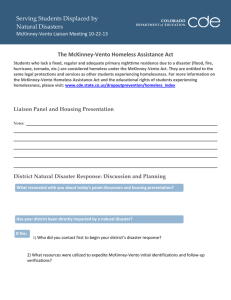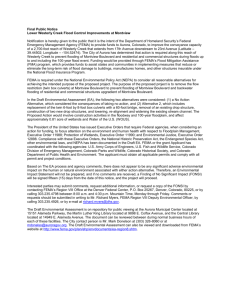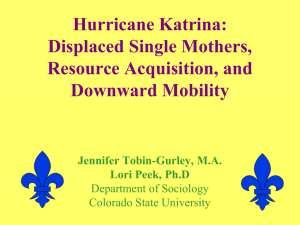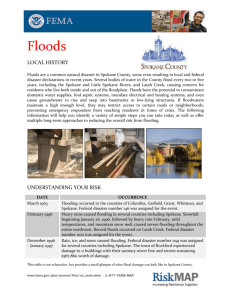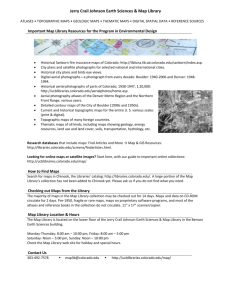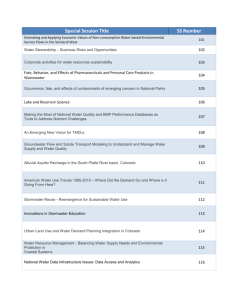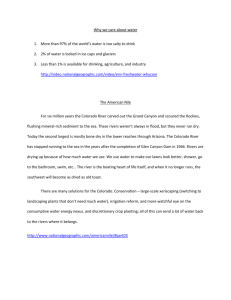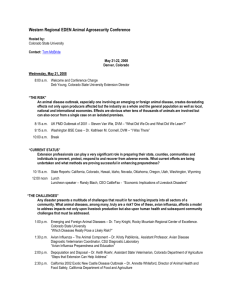Recovery Planning and the Colorado Floods
advertisement
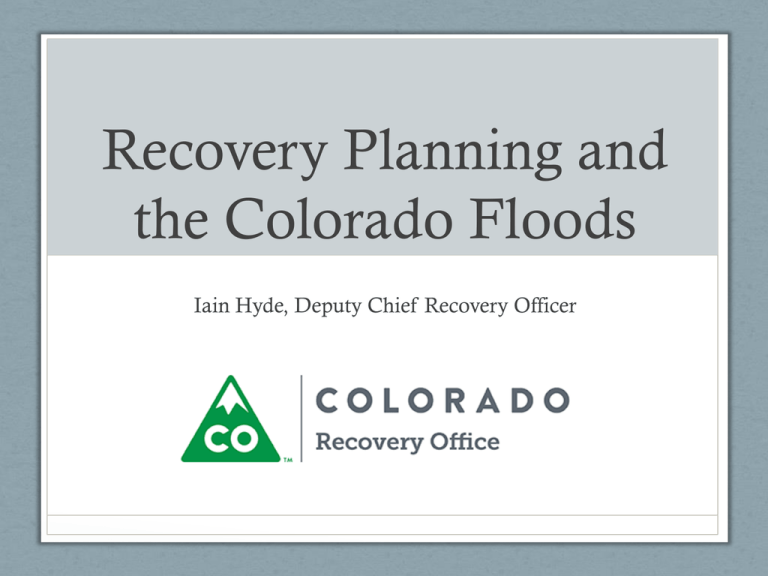
Recovery Planning and the Colorado Floods Iain Hyde, Deputy Chief Recovery Officer Colorado Disaster History • 1997 – Fort Collins Flood • 1999 – Arkansas River Basin Floods • 2002 – Wildfires • 2008 – Windsor Tornado • 2012 – Waldo Canyon and High Park Fires • 2013 – Black Forest Fire • 2013 – September Floods Recovery Frameworks • Presence of a framework enhances coordination and responsiveness, expands conversation beyond standard FEMA recovery programs • National Disaster Recovery Framework • Recovery Support Functions – lead and support agencies • Coordination with states, support to locals • Better leverages knowledge and resources across the Federal Government • State of Colorado Draft Recovery Plan • • • • Under development before floods; operational Incorporated lessons from 2012, 2013 wildfires State Recovery Support Functions – What if FEMA isn’t coming? Recovery coordination starts at onset of events Pre-Disaster Planning • State Agencies needed to be organized for Long Term Recovery • Function if federal resources are not available • Align with Federal resources when they do come • Focus on: • Capabilities • Structures and Actions • Timing and flexibility • Local Communities pre-flood: Primarily planned for specific capabilities (debris management, damage assessment, etc.) • However some starting to develop more comprehensive pre-disaster plans • Assign responsibilities • Develop locally appropriate Recovery Support Functions • Use best practices from other communities, but customize for local structures, issues, needs, etc. RSFs in Colorado September Flood Disaster Summary By the Numbers • 18,147 evacuated • 16,557 approved for Individual Assistance • 479 Families in Transitional Sheltering at peak • 485 miles of damaged or destroyed roads • 18 Counties approved for Public Assistance, 11 for Individual Assistance • NFIP, SBA, Individual Assistance: $430 million • Public Assistance: Projected $400 Million • FHWA (Roads): Projected $450 Million • CDBG: $262 Million Local Communities • Driving forces in recovery • Ultimately the ones that live with the decisions made and actions taken in recovery • In charge of visioning; Need to be thoughtful, deliberative yet move quickly • Think about steps to reduce risk from the next event as early as possible Post Flood Disaster Recovery Planning and Visioning • Agencies Involved: Communities(citizens, local governments, businesses), Department of Local Affairs, FEMA Community Planning and Capacity Building, University of Colorado at Denver, Colorado Office of Emergency Management • Parallel Processes: Stream Corridor Master Plans, Stormwater Master Plans, floodplain mapping/risk assessments • Important Considerations: • Locally driven • Community engagement • Strategic, tangible and achievable • Current Status: Some plans under development, some just getting started Considerations for PostDisaster Planning Considerations for Post Disaster Planning • Timing – When is the Community ready? When is it too late? • Urgency – How quickly do you develop a post-disaster plan? • Public Engagement – How do you leverage input and engagement of community members? • Issues – What sectors impacted? Where are there opportunities for mitigation, resiliency, enhancements? • Other Plans – Mitigation Plan, Comprehensive Plan, Capitol Improvements, Zoning, Sustainability • Leverage documents that already exist • Need for tangible actions Questions? Iain Hyde, CFM Deputy Chief Recovery Officer Colorado Recovery Office iain.hyde@state.co.us
